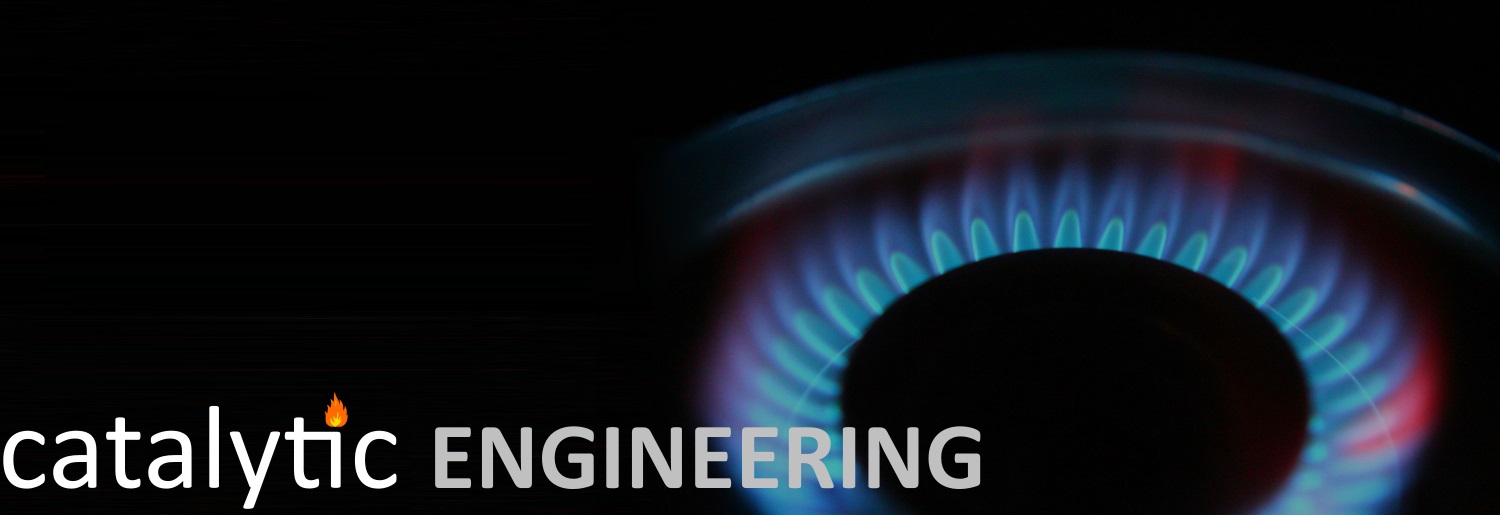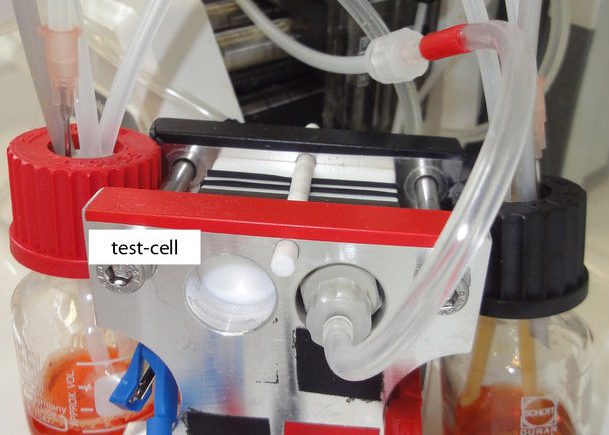The fascinating “brine4power” energy storage project was just announced in June 2017 by German energy company EWE Gasspeicher (natural gas storage specialist). It’s a massive flow battery, using underground salt caverns to store the positive and negative electrolytes. It’s basically a standard flow battery scaled up enormously .
EWE has made a big deal about how the electrolytes are creating by dissolving the salt in water, and forming salt (presumably sodium chloride) solutions in-place. However, the salt is just the supporting electrolyte. The charge is carried by organic polymers. Presumably a vast quantity of these polymers will be needed, as energy density is only about 7 Wh/L
It will be interesting to see if the purity of the natural salt is high enough to prevent the catalysis of side reactions. The electrolyte is water-based, which means that at high potentials, oxygen and hydrogen may be accidentally generated.
The developer of the flow battery technology is startup Jenabatteries, a spinoff of the Friedrich Schiller University in Jena, Germany. Here’s a press release by the university back in 2015, announcing a 2015 Nature paper that the researchers about the technology – that’s the best place to dig into the technical details.
EWE Gasspeicher is undoubtedly looking to diversify its experience with using underground salt caverns to store natural gas. Don’t hold your breath waiting for the demonstration, though – the working salt cavern battery is not expected until 2023. The planned ramp up is
PHASE 1: 10-20 kW, 10-40 kWh
PHASE 2: 100-500 kW, 500-2500 kWh
PHASE 3: <120MW, <700 MWh (100,000 m^3 tanks)
So, what is the world’s largest battery?
There’s a long way to go for brine4power to seize that title, as many flow battery companies are already demonstrating MW scale projects. And “world’s largest battery” is a fast moving target. Here’s a list of current contenders:
- The largest energy storage device is surely a hydropower plant, perhaps Dinorwig at 1800 MW / 9100 MWh or one of the others in this Wikipedia list. Definitions are a bit variable, as the maximum capacity depends on the willingness of the utility to entirely drain the upper reservoir, and a variety of dams could be considered ‘energy storage’ although the charging (fill) rates are determined by rainfall.
- AES appears to hold the title for largest currently operating electrochemical battery, with its AES/SDG&E Escondido plant, at 30 MW and 120 MWh. Tesla’s 20 MW / 80 MWh Mira Loma plant is closed behind, as is Greensmith’s 20 MW / 80 MWh plant at Pomona. Like the Tesla Mira Loma plant, it was brought in quickly to serve the shortfall after the massive Aliso Canyon natural gas leak.
- The world’s largest operating flow battery is Sumitomo’s Hokkaido building, 15 MW / 60 MWh, which started operation in 2015.
For future and announced projects:
- UniEnergy (Vanadium flow battery) announced a massive 200 MW / 800 MWh plant to be located in Dalian, near its partners Rongke. Announced 2016, but precious little information on completion date. It’s actually “up to 10” modular 20 MW / 80 MWh units.
- Tesla Hornsdale Power Reserve project project with Neoen, in Australia, announced July 2017, 100 MW / 129 MWh (astonishingly low energy-to-power ratio of 1.3 hours, presumably to maximize lifetime and reliability). Planned to be completed in 2017
- AES, 100 MW / 400 MWh, at Alamitos Power Center in Long Beach, CA. 4 hours storage, announced 2014, to be completed 2020 or 2021.
So, brine4power’s battery won’t be able to match hydropower pumped storage, but it could become the world’s largest electrochemical energy storage system – if no one else moves faster or catches up.


Thanks for sharing this Article and here is some information about Stack Gas Analyzer.